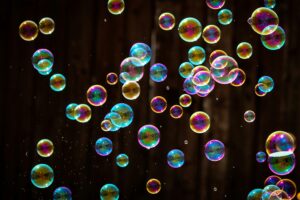Photo: unsplashed; Braedon McLeod
This month, the 10th Diversity & Inclusion Symposium took place, organized by the Diversity & Inclusion Expertise Office and the Faculty of Archaeology. For the small ICLON delegation that attended, the event highlighted how the questions, challenges and opportunities we face are not dissimilar to those experienced by colleagues elsewhere in our organization.
After 10 years of D&I policy, it has become clear that addressing equity, diversity and inclusion in meaningful and impactful way remains challenging. The symposium’s plenary speakers highlighted how the university is a place not just for research and knowledge sharing, but also where students and staff must learn to navigate complex and conflicting conversations. At ICLON, this is a topic that has been very much on our mind lately, as researchers, but also as teacher educators and trainers, and as an organization more broadly. How can ICLON research keep addressing these challenges? And what aspects of research and education should be emphasized in in order to contribute to an inclusive society?
Untold stories and questioning
The theme of the symposium was “Untold Stories.” In her opening keynote, Dr Valika Smeulders from the Rijksmuseum demonstrated how the museum navigates complex conversations effectively using heritage and fragile pasts. She explained about breaking existing frameworks and dominant narratives through multi-perspectivity and personal stories. In times of polarization, heritage can function to facilitate an open dialogue but also be a trigger for a heated debate.
This notion underpinned our recent research published in a history education journal. Collaborating with the Rijksmuseum van Oudheden, we developed a training for history teachers on addressing sensitive topics. Using concrete heritage objects and varied questions, teachers created space for students to share their perspectives and tell their stories. Following the intervention, teachers felt better-equipped to navigate such conversations in their classrooms, as observed in lessons addressing contentious issues like “Zwarte Piet”. Students and teachers were stimulated to ask questions. Certain questions can ‘heat up’ cooled down issues and hot topics can be ‘cooled down’ by questioning and not focusing on ‘the right answer’.
Photo: unsplashed Kind and Curious
Dealing with discomfort and doubt
Maintaining such dialogue and continuing to question can be difficult. In a workshop at the same symposium, by Ruben Treurniet from Civinc, participants engaged with each other anonymously using a tool that connects individuals with differing views. Through an online chat session, we exchanged thoughts on statements like “Debates about academic freedom should also involve the possibility of defending the right to not be inclusive.” A slight majority disagreed with this statement. The app encouraged us to ask each other questions, and provided an intriguing opportunity to converse with someone outside of one’s usual ’bubble’.
These anonymous discussions can foster some form of connection, and can be a useful tool in developing mutual understanding. In our professional context, however, we do not generally communicate through anonymous chat, but through face-to-face encounters, with their accompanying tone, body language and emotional load. Conversations on controversial topics can become tense and confrontational, and can actually reinforce relationships of power and dominance. Explicitly expressing feelings, doubt and judgments can also be also daunting for educators and researchers expected to exude authority, or who are anxious about repercussions if they do not maintain a ‘neutral’ standpoint. However, it is important that we, as researchers and educators, demonstrate the art of doubt and model how to deal with uncertainty.
Interdisciplinarity and positionality
Finally, it may be beneficial to revisit certain cooled-down topics to practice interdisciplinary thinking and multi-perspectivity. A historical perspective, as shown by Valika Smeulders, can offer various narratives, demonstrating how history is a construct accommodating diverse viewpoints. An issue that is ‘hot’ in the present could be ‘normal’ in the past and vice versa. Looking beyond your own time and discipline can be inspiring and helpful. Collaborating across disciplines broadens perspectives while requiring us to clarify our own viewpoint through questioning and being questioned. At the moment, this principle is being applied in ongoing research with history and biology teacher trainees.
Other current projects at ICLON are exploring culturally sensitive teaching, linguistic diversity, approaches to inclusion, and teacher, student teacher and teacher educator perspectives on equality, equity and social justice. These sensitive areas of research can create vulnerable situations for participants and researchers alike. They demand researchers’ critical awareness of their positionality, grappling with their values and giving space to non-dominant perspectives, while also contributing to authoritative knowledge and relevant practical applications.
Perhaps interdisciplinary and positionality could be a theme for a future symposium, bridging the diverse perspectives, experiences and expertise at ICLON and the university more widely. We could show what ICLON can offer regarding questioning, dealing with discomfort and interdisciplinarity, and open space for further dialogue at our university.
Acknowledgments
Many thanks to the Diversity and Inclusion Expertise Office and the Faculty of Archeology for organizing this symposium and thanks to Dr. Tessa Mearns for her helpful comments while writing this text.
Reference
Logtenberg, A., Savenije, G., de Bruijn, P., Epping, T., & Goijens, G. (2024). Teaching sensitive topics: Training history teachers in collaboration with the museum. Historical Encounters, 11(1), 43-59. https://doi.org/10.52289/hej11.104





Recent Comments